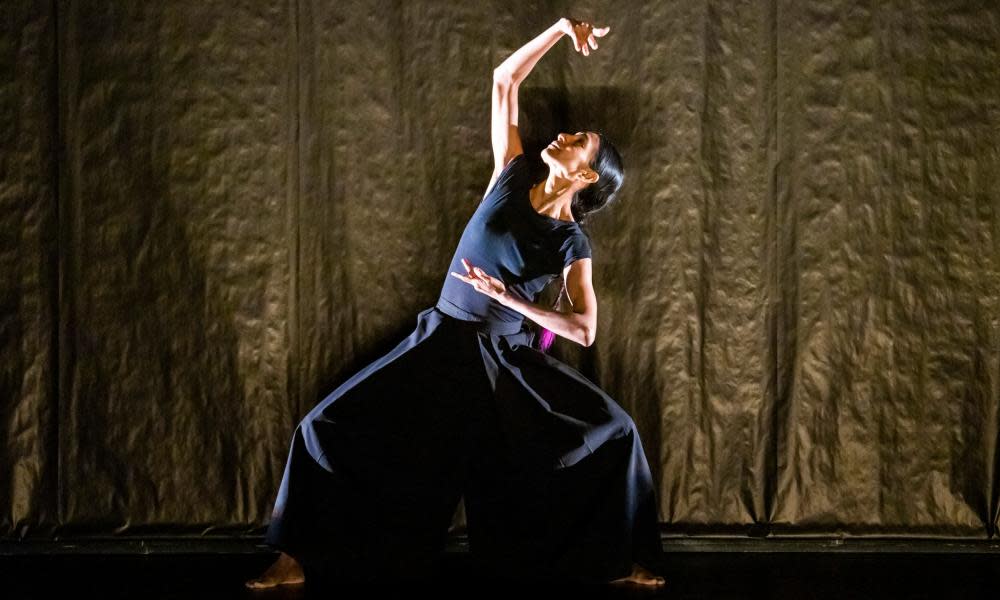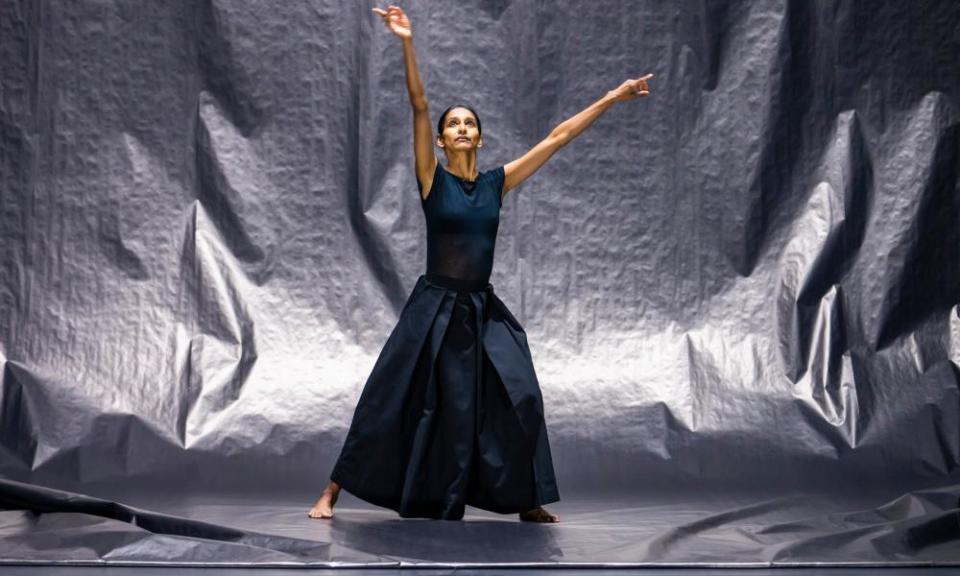Compagnie 111: aSH review – godlike serenity and transcendent movement

The Hindu god Shiva is an inspiration for aSH, and Indian kuchipudi dancer Shantala Shivalingappa has a presence so self-possessedly serene as to qualify as godly. Her stillness goes deep, but even when she’s moving there is hypnotic constancy in her circling limbs. Long arms stretch into precision-cut angles but she doesn’t slash or slice the air, it’s more like the air silently parts to make way for her.
Shivalingappa’s remarkable quality of movement has led her to be a muse for Peter Brook, Pina Bausch, Maurice Béjart and now French director Aurélien Bory, who has conceived this solo that Shivalingappa herself choreographed. The dancer is not entirely alone on stage. There’s percussionist Loïc Schild conjuring gentle tremolos and ominous rumbles, and there’s the set, designed by Bory, which is a character in its own right.
A vast sheet of thick metallic paper hangs behind Shivalingappa, the scene coloured a shadowy bronze. The paper begins to ripple and billow, launching forward like a giant beast or wave, threatening to engulf her. Yet it’s entirely possible to believe that Shivalingappa is silently controlling the forces around her.

The sheet becomes an instrument, Schild rhythmically rapping his fingers on it; it’s also a cocoon and a canvas, where Shivalingappa draws circles with what’s essentially a giant pastry brush and then scatters ash across the surface, tracing rings in the dust with her feet. An image is slowly revealed, like a rising sun or a powerful vortex, something mighty and beautiful. aSH is a story of constant transformation and renewal, of destruction and creation, of life’s circularity, and there’s Shivalingappa, without forceful presence or exertion, at the core of all this visual wonder.
At the Barbican, London, until 29 January as part of London international mime festival, which runs until 6 February.

 Yahoo Movies
Yahoo Movies 
